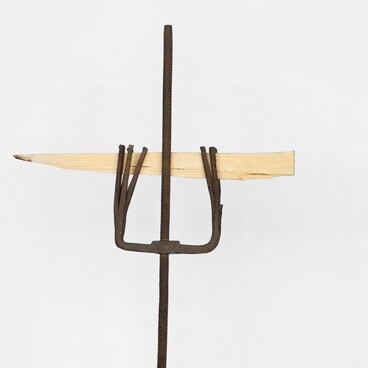The medieval culture, faith and customs of the ancestors of the northern Udmurts are restored not only by studying the settlements where tools and jewelry are found, but also by the burial grounds. These are complexes of ancient burials that were formed in the 9th–15th centuries. The study of burial grounds gives an idea of social and family relationships in medieval society, the level of applied art, trade and economic status of the tribe, its way of life and hierarchy. The Glazov Museum of Local Lore presents the artifacts found in the Pecheshursky burial ground, discovered during excavations carried out in 1967.
A thousand years ago, the Udmurts buried people with their heads facing north, stretching their arms along their bodies. For burials, they chose gentle slopes. The graves were rectangular, 20–60 cm in depth and up to 220 cm in length. The bodies rested in wooden coffins, and in some graves, archaeologists find remnants of birch bark, bast, and fur, which lined the bottom of the coffin. In Orthodox Christianity, on the contrary, it is customary to bury people with their heads to the west, so that when the soul is resurrected, it sees the sunrise and a new life.
The Udmurt burial grounds, or vuzhshui, necessarily contained grave goods and objects of worship, pursuant to the medieval religious beliefs and burial rites. People believed that after death, the dead would enter the afterlife, where things that they used during their lifetime would be useful as well. Often, in addition to clothes and personal items of the deceased, a fire steel and a piece of flint were placed in the grave — as a tribute to the cult of fire. Jewelry was placed in women’s burials exactly in the order in which they wore it during their lifetime. In the men’s burials, the grave goods reflected the occupation of the deceased.
The Glazov Museum of Local Lore presents the artifacts from the Pecheshursky burial: a pot, a knife, an awl, a hatchet, arrowheads and dart tips. It is likely that a hunter was buried in this grave. Judging by the skeletal remains, he was about 40 years old — for the Middle Ages he was a long-lived man. Women lived on average 10 years less than men.
The Udmurts imagined the cycle of a person’s life as three weddings. The first is the baby’s wedding, when it connects with the world. The second takes place when a person gets betrothed and creates a family. The third wedding is a union with death. Death was considered dirty, after the funeral, things that came into contact with the deceased were burned.
A thousand years ago, the Udmurts buried people with their heads facing north, stretching their arms along their bodies. For burials, they chose gentle slopes. The graves were rectangular, 20–60 cm in depth and up to 220 cm in length. The bodies rested in wooden coffins, and in some graves, archaeologists find remnants of birch bark, bast, and fur, which lined the bottom of the coffin. In Orthodox Christianity, on the contrary, it is customary to bury people with their heads to the west, so that when the soul is resurrected, it sees the sunrise and a new life.
The Udmurt burial grounds, or vuzhshui, necessarily contained grave goods and objects of worship, pursuant to the medieval religious beliefs and burial rites. People believed that after death, the dead would enter the afterlife, where things that they used during their lifetime would be useful as well. Often, in addition to clothes and personal items of the deceased, a fire steel and a piece of flint were placed in the grave — as a tribute to the cult of fire. Jewelry was placed in women’s burials exactly in the order in which they wore it during their lifetime. In the men’s burials, the grave goods reflected the occupation of the deceased.
The Glazov Museum of Local Lore presents the artifacts from the Pecheshursky burial: a pot, a knife, an awl, a hatchet, arrowheads and dart tips. It is likely that a hunter was buried in this grave. Judging by the skeletal remains, he was about 40 years old — for the Middle Ages he was a long-lived man. Women lived on average 10 years less than men.
The Udmurts imagined the cycle of a person’s life as three weddings. The first is the baby’s wedding, when it connects with the world. The second takes place when a person gets betrothed and creates a family. The third wedding is a union with death. Death was considered dirty, after the funeral, things that came into contact with the deceased were burned.














